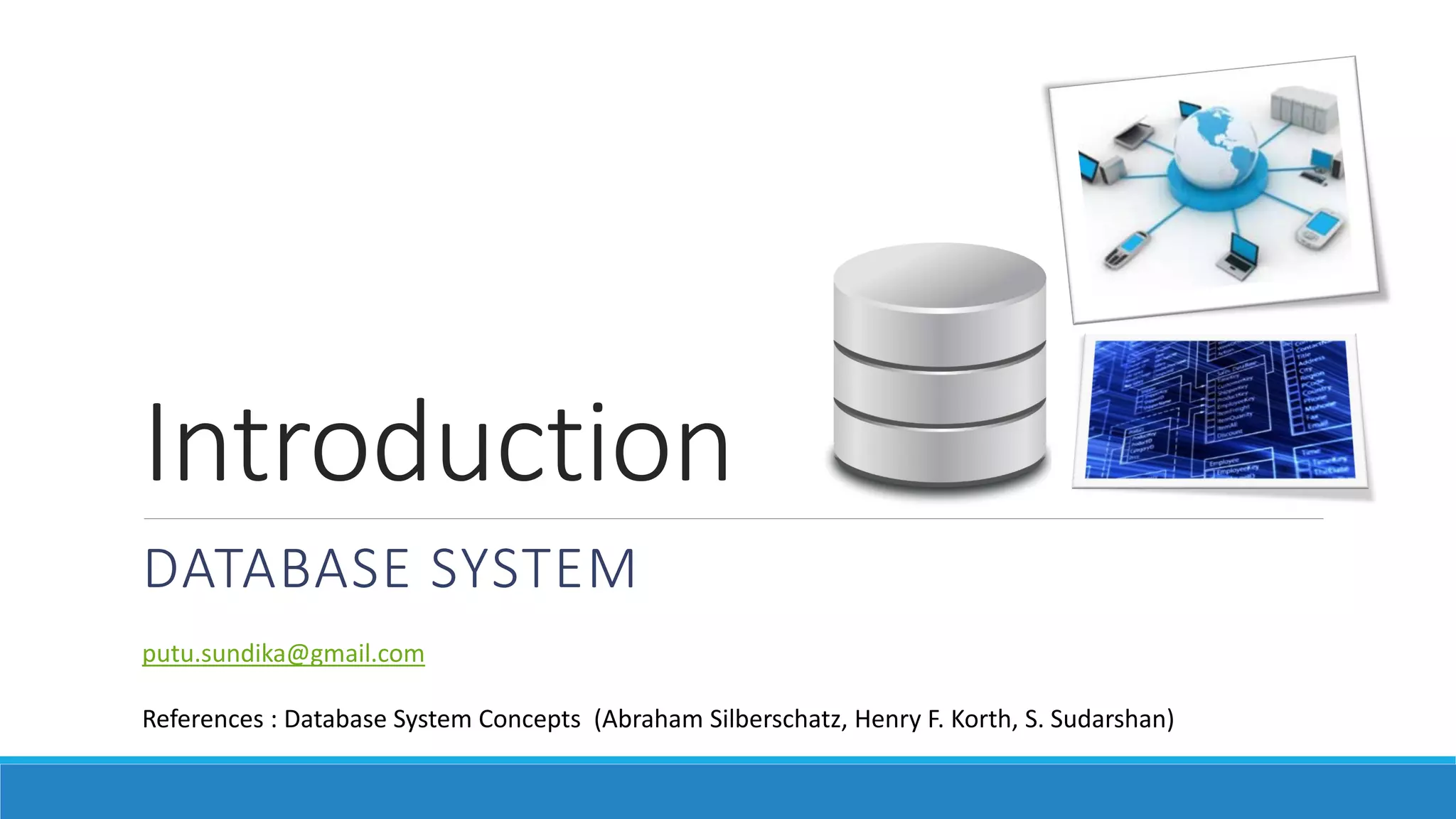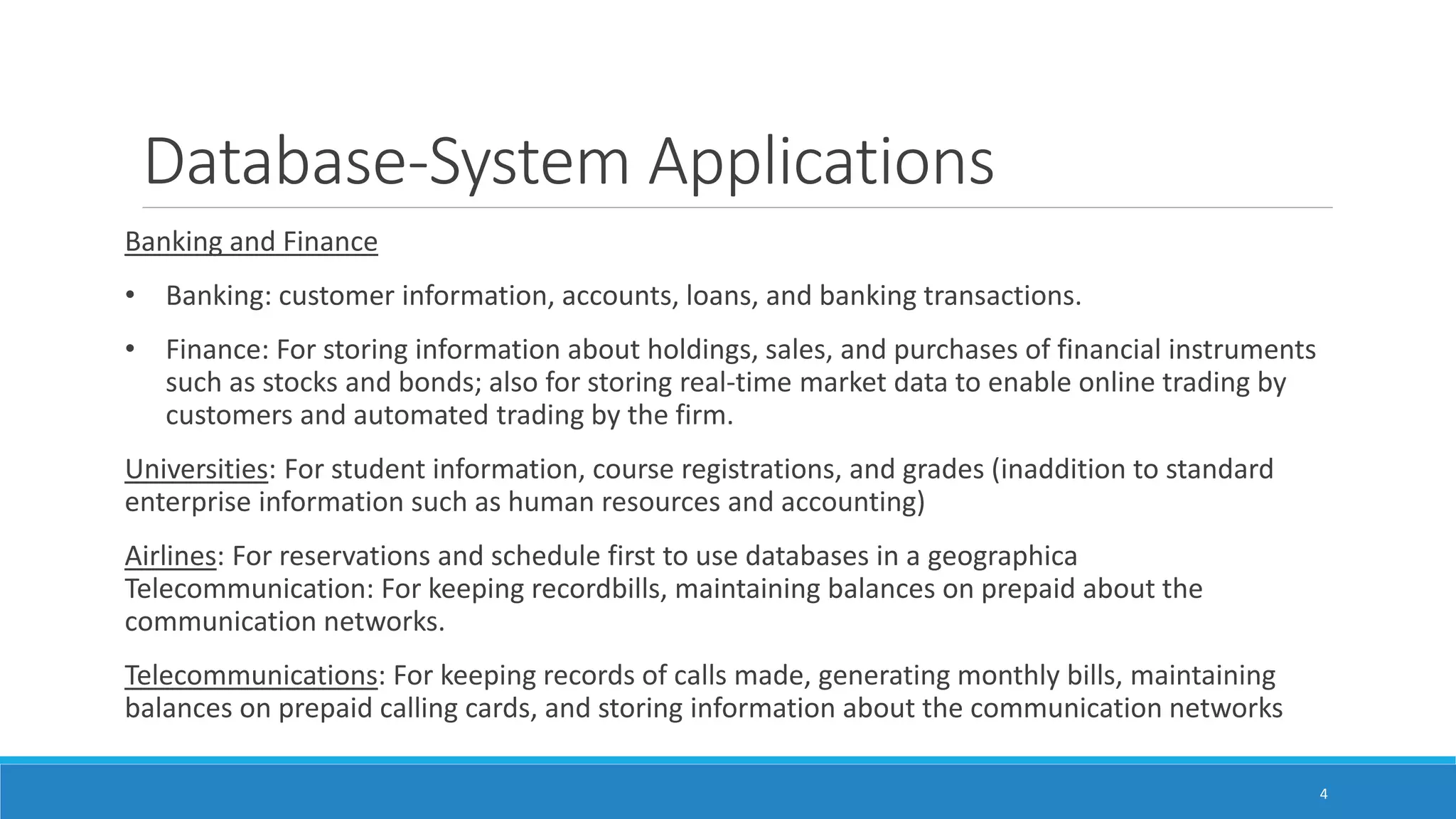This document discusses database system applications and the advantages of database systems over traditional file processing systems. It provides examples of common database applications in various industries like banking, retail, healthcare, education, and telecommunications. It also outlines some of the key disadvantages of file processing systems like data redundancy, difficulty in data access, isolation of data, integrity issues, and security problems. The document introduces fundamental database concepts like data definition language, data manipulation language, data models, database schema, and relational databases. It provides a high-level overview of SQL as the most widely used database language. Finally, it lists an assignment for student groups to summarize the material and propose sample database tables for various popular websites and applications.





















